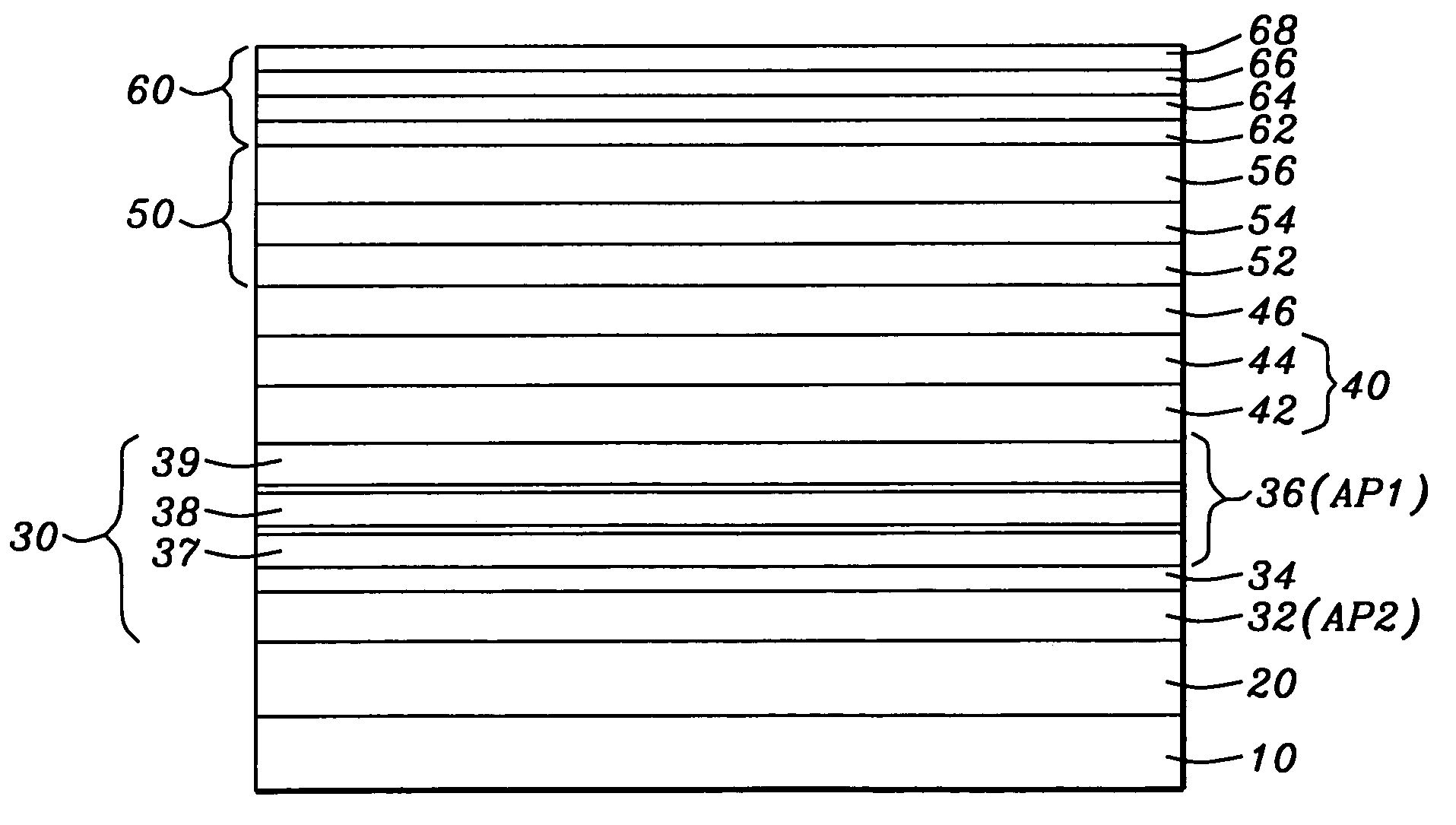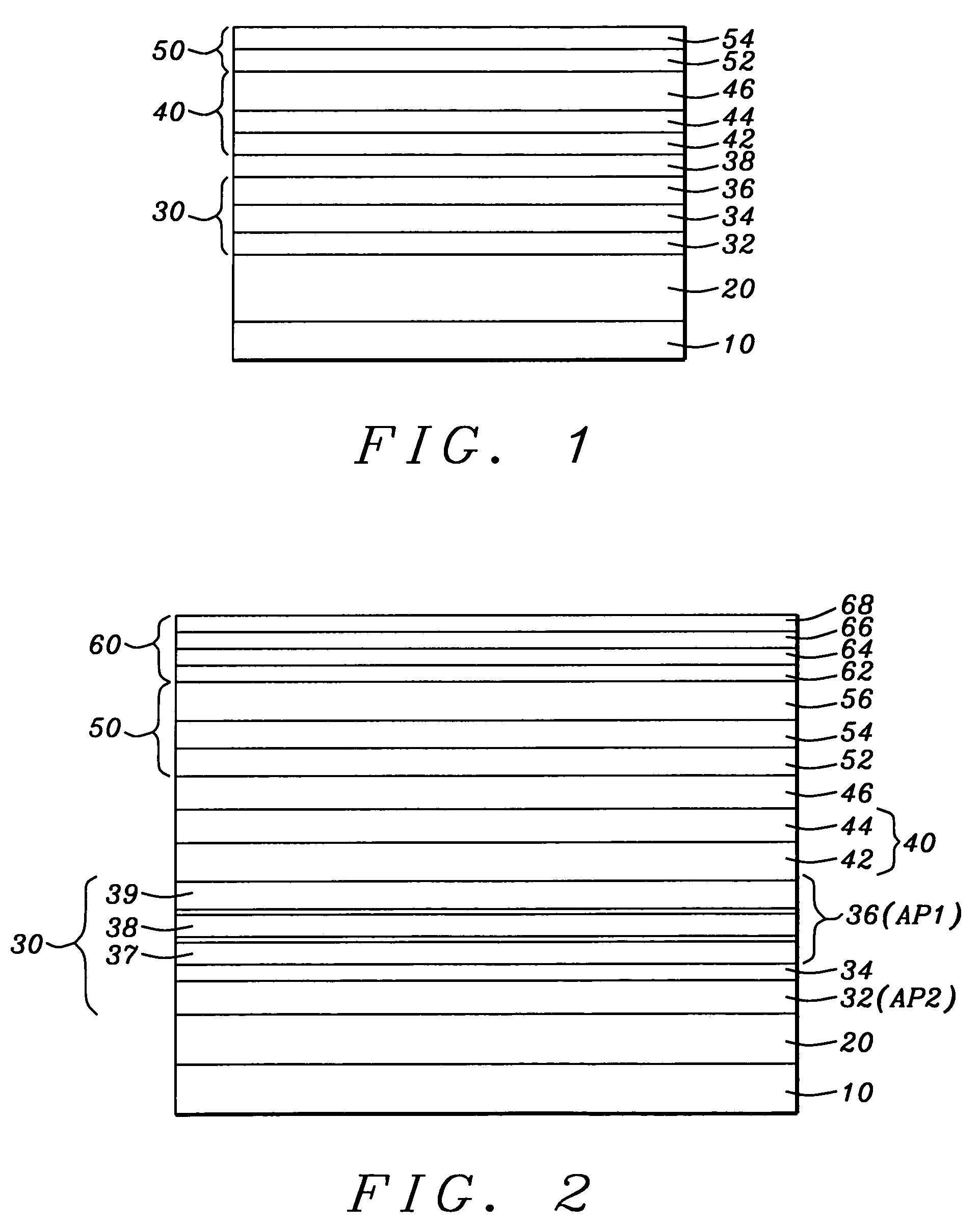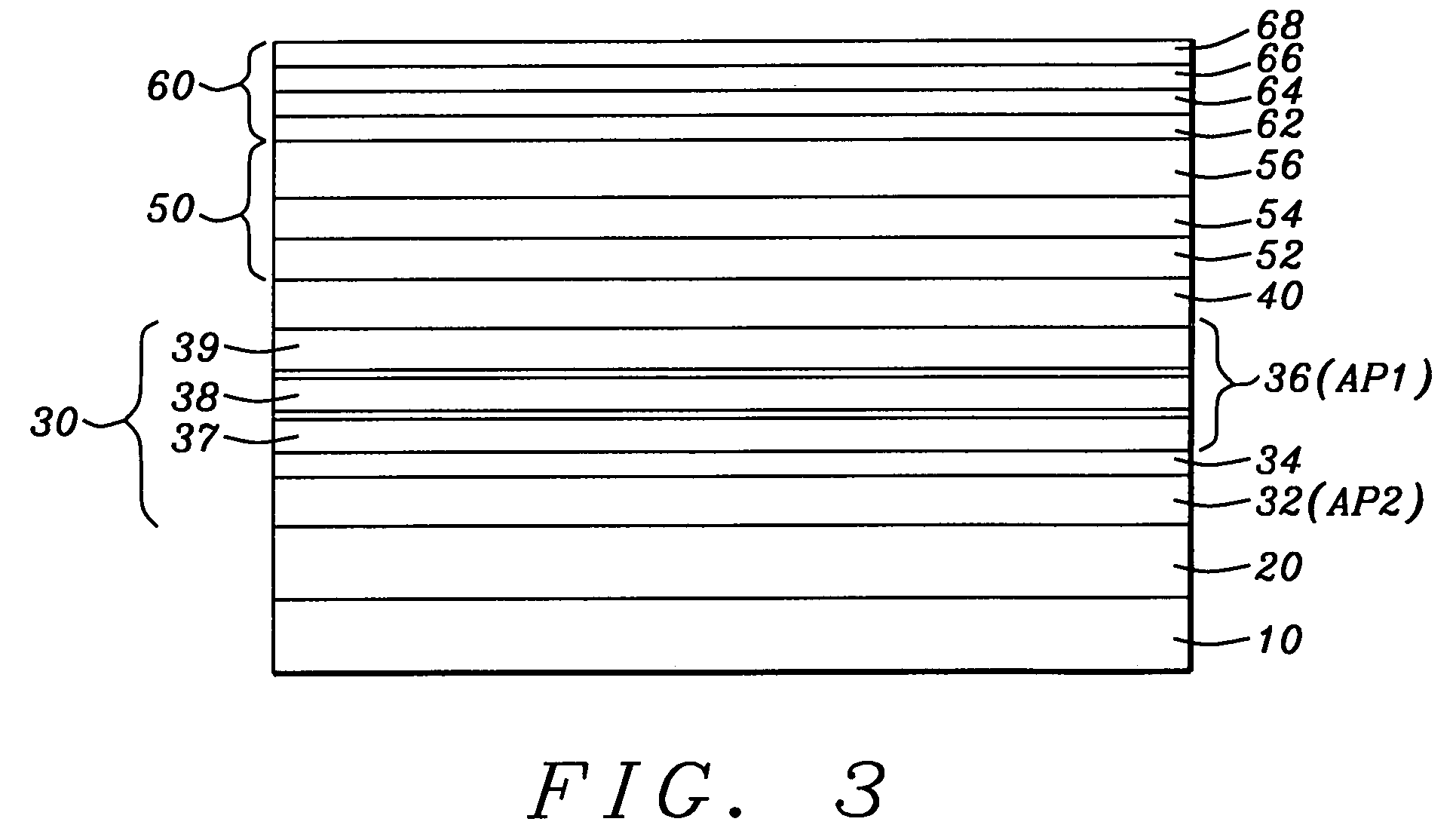Magnetoresistive spin valve sensor with tri-layer free layer
a technology of magnetoresistive spin valve and free layer, which is applied in the field of magnetoresistive read sensors, can solve problems such as the change of the resistance of the layered configuration, and achieve the effects of low areal resistance (ra), high mr ratio, and low free layer coercivity
- Summary
- Abstract
- Description
- Claims
- Application Information
AI Technical Summary
Benefits of technology
Problems solved by technology
Method used
Image
Examples
Embodiment Construction
[0049]The first preferred embodiment of the present invention is a TMR sensor structure of improved areal resistance, improved free layer coercivity, improved magnetoresistive ratio (dR / R) and improved magnetostriction qualities. This improvement is obtained by the introduction of a tri-layer free layer comprising a CoFeB layer interposed between CoFe and NiFe layers.
[0050]Referring first to FIG. 1, there is shown in schematic form a cross-sectional view through a vertical plane of a TMR sensor stack with conduction lead layers and magnetic biasing layers not illustrated. It is understood that the layers in the stack are most typically formed by a process of sputtering from appropriate targets, with the exception of layers that require additional processing as will be noted. Looking at the layered structure from the bottom to the top, there is shown first a seed layer (10), which can be a layer of Ta / NiCr with the Ta formed to a thickness between approximately 5 and 30 angstroms, wi...
PUM
| Property | Measurement | Unit |
|---|---|---|
| thickness | aaaaa | aaaaa |
| thickness | aaaaa | aaaaa |
| thickness | aaaaa | aaaaa |
Abstract
Description
Claims
Application Information
 Login to View More
Login to View More - R&D
- Intellectual Property
- Life Sciences
- Materials
- Tech Scout
- Unparalleled Data Quality
- Higher Quality Content
- 60% Fewer Hallucinations
Browse by: Latest US Patents, China's latest patents, Technical Efficacy Thesaurus, Application Domain, Technology Topic, Popular Technical Reports.
© 2025 PatSnap. All rights reserved.Legal|Privacy policy|Modern Slavery Act Transparency Statement|Sitemap|About US| Contact US: help@patsnap.com



